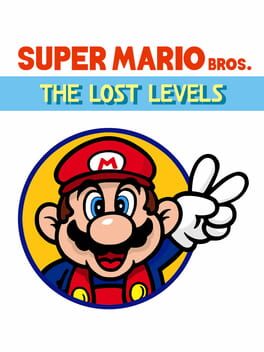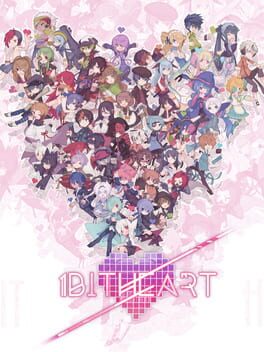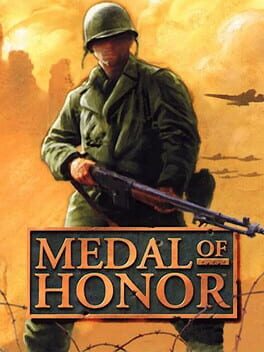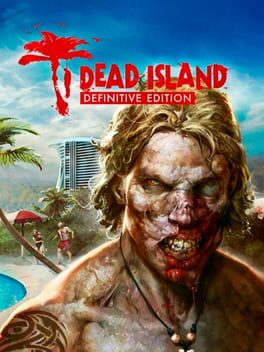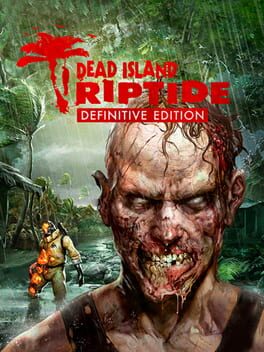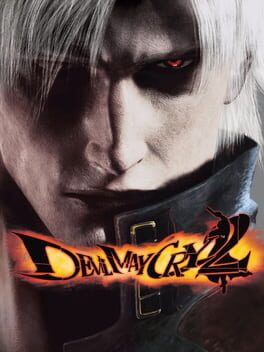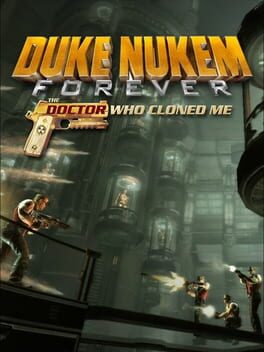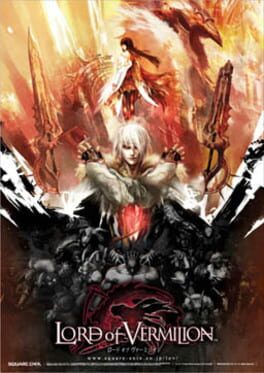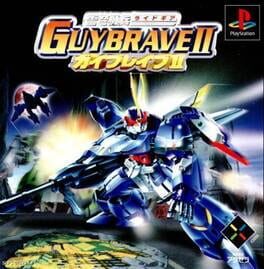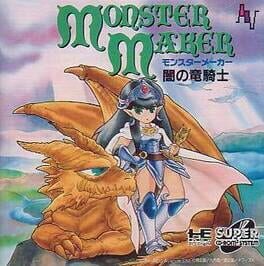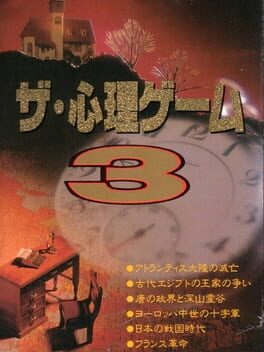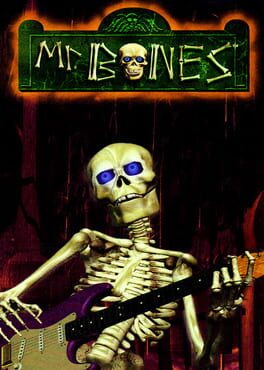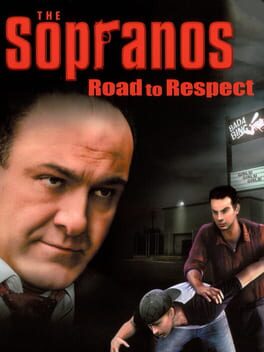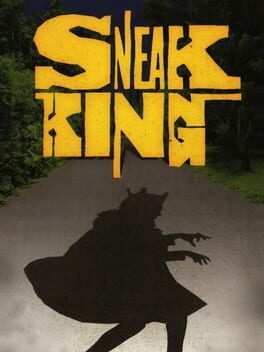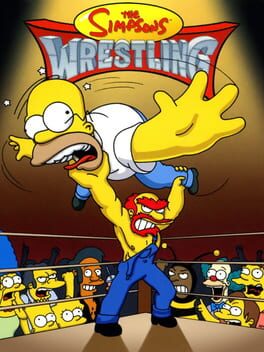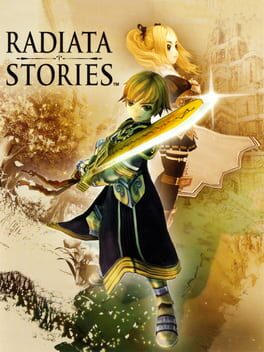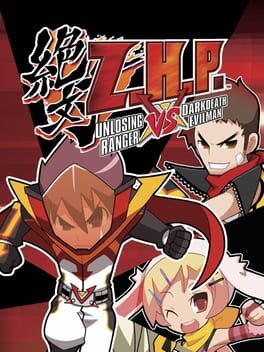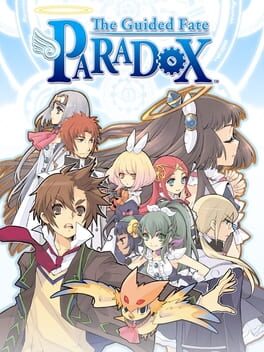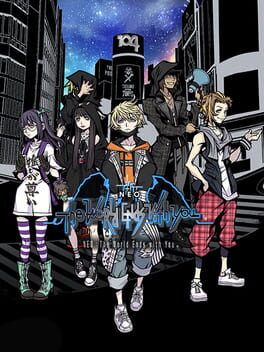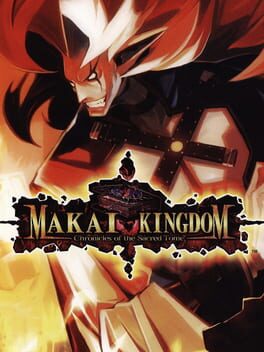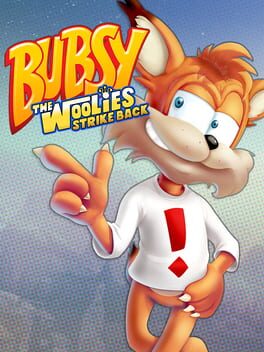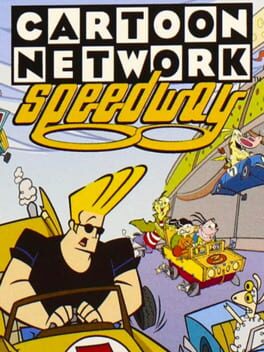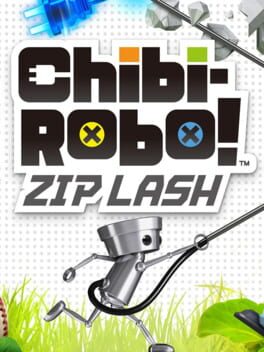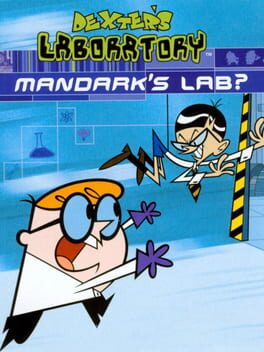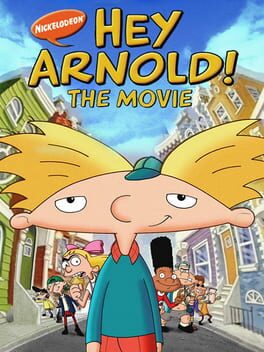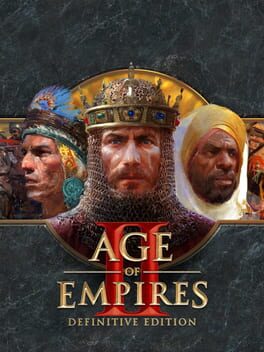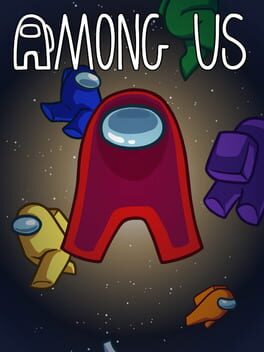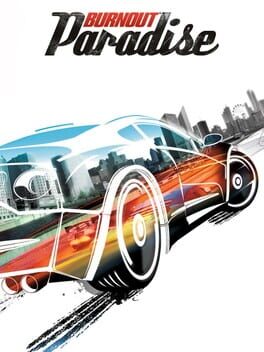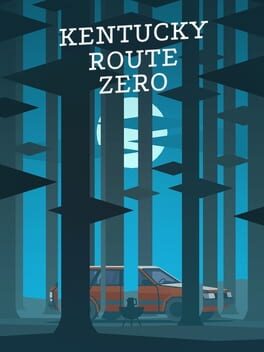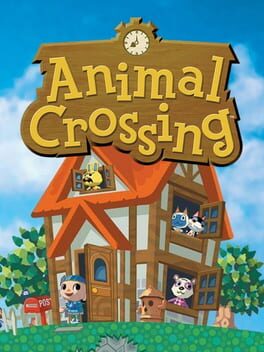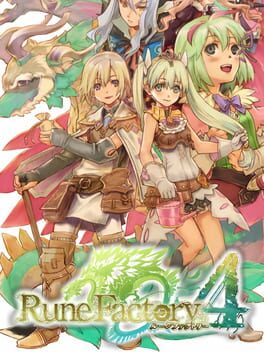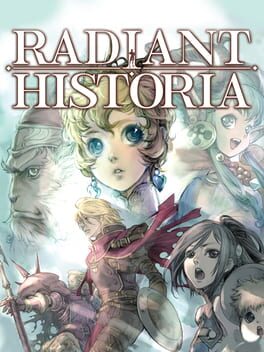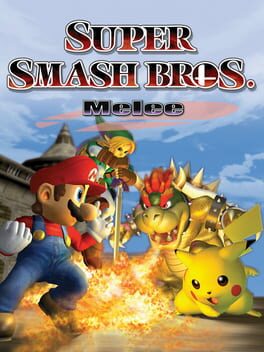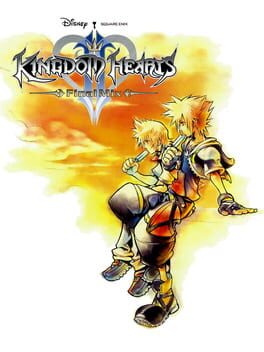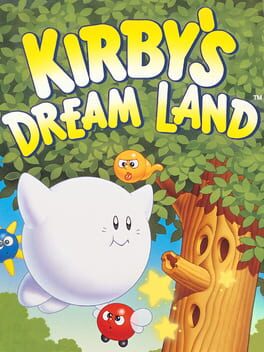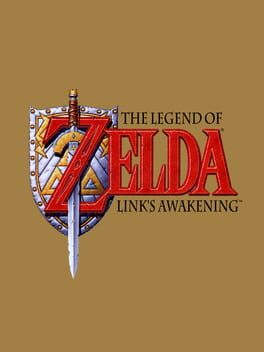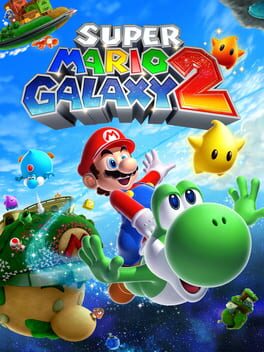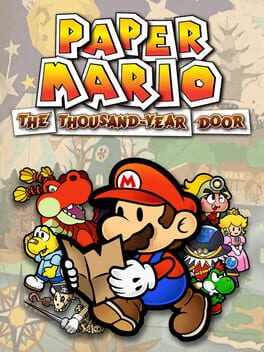KiddieMan
1325 reviews liked by KiddieMan
It's more Super Mario Bros.! Which is great, if you want more 1985-style Super Mario Bros. And, brother, I like me some 1985 Super Mario Bros. ...But, like, not that much. In a post Mario Maker world, the game almost seems silly—trite, in a way—but if you want a historical peek at what an official Nintendo Mario kaizo was like in 1986, it's definitely a fun historical visit. Challenging, to be sure, but that's part of the fun, I think.
So many hard and fast lines in the sand drawn around this one. 'Bad level design,' 'this game HATES you,' etc. All coming from the fundamental feeling that this game is in some way, doing it wrong. It is not just un-fun. It is a complete misunderstanding of what makes a game fun. Even though I see where people are coming from, I can't agree. This game's approach isn't wrong, its goals are just so different from what games normally strive for that it feels completely alienating.
To understand why The Lost Levels is the way it is, we need only look at when it was released. This game is not Miyamoto and Company's follow-up to Super Mario Bros. First, earlier in 1986, he and former AD Takashi Tezuka (who shares the director chair with Miyamoto on this game as well) went to work on The Legend of Zelda. Nowadays, the original Zelda also feels pretty alien. Without a guide, its puzzles can feel completely random. To modern sensibilities, it looks like needless obfuscation in service of nothing. But immersing a player in a game and making the immense financial investment of one worth it was a very different task in the 80s. You could angle for intense difficulty to extend runtime, a common ploy. Instead, Zelda forged a new path. With a manual full of hints in hand, players were encouraged to take notes, create their own maps, and endlessly trial and error. It's padding! But it's the kind of padding that deepens the experience. It's how you get people brainstorming how to find Ganon with their friends on the playground at lunch, and these are the people who will treasure the game forever. It can feel like a guide game now, but if you give yourself over to the experience, manual and all, you can still see sparks of what made it such a revolution.
This is not an easily replicable formula. A part of me feels like the release of Zelda broke everyone at Nintendo's brains. Looking at the games coming out in the wake of Zelda, even those cashing in on the post-Mario platforming boom, you see an abrupt shift. Suddenly an Ice Climbers started looking more like a Metroid or Kid Icarus. Tasked with making a sequel to Super Mario Bros, our dynamic duo began to experiment with ways they could introduce their new approach to level design to the setting of Mario, while simultaneously expanding upon the ideas of the first game and giving this one its own identity.
The approach they took was one of a reactive, retaliatory, sequel. Commercially, a bad call. Sequels of this ilk rarely go over well with fans. Think of a film like The Last Jedi. It plays on the rhymes, rhythms and preconceived notions of the series (and its fan base) to dramatic effect. However you think that turned out (my lawyer has advised I abstain from commenting), it was deeply contentious and outright rejected by many diehard fans. Putting aside how interesting I find this game, Nintendo of America was unusually canny to realise releasing this as Mario 2 would have been ruinous.
What came of this daring experiment? A game infamous for unreasonably punishing difficulty. Depending on how it hits you, this game can feel like it's mocking you. The decision to include constant (what had not yet been coined) trolls in the forms of invisible blocks, whacked-out enemy positioning and the like is pretty immediately off-putting. What makes it even more aggravating is how intentional it is. 8-3 is awash with invisible blocks present only to punish you for trying to deal with hammer bros in the way the two games have taught you is most effective. Multiple levels have gaps that punish you for running blindly at max pace in a game whose predecessor was most fun when you were doing just that. 4-1 has an arbitrary single block pit at the end specifically to kill you if you randomly hold back a little bit in fear after this entire game has told you to exercise more caution. It is absurd!
Did you ever see that Hbomberguy video on Pathologic? A great watch, but one thing about it always confused me. After an entire multi-hour discussion on how intellectually invigorating, deeply immersive and artistically enriching he found the game, he continued to insist it wasn't fun. Who is Bomberman trying to kid here? We (Gamers) continue to insist fun only has one form. That is the 'reasonable challenge that can be comfortably overcome in a satisfying amount of time with minimal outside assistance' kind of fun. A perfectly valid kind of fun that this game cannot accommodate. But there are many forms of fun. Major nerd alert in coming here, but engaging with the artistic intentions and themes of a work with a lot to say and an exciting way of saying it is fun! Playing an influential game wherein the ideas and innovation are still visible within many games you love, putting yourself into the mental context of the time, is fun! Most relevantly, engaging in a back-and-forth with an artist stretching the limits of their sensibilities, disregarding the wants and needs of the audience, and completely indulging themselves in ideas usually considered frustrating or flat-out wrong is a kind of fun! It might not be your kind of fun, but it certainly is mine.
From start to finish, I have the cheesiest grin playing this thing. I and the collected workers of Nintendo R&D4 are sitting in a theatre, watching the perfectly timed Looney Tune nonsense of their game play out, again and again, for hours on end, and just laughing and laughing. The crucial thing to realise here is what we are laughing at. Not you certainly, there is no victim to this tomfoolery. Instead, it is giddy in the realisation it can turn every expectation of a platformer into an anti-joke. It's dragging you along with it. Do so dutifully and be bored, or join it in its enthusiasm and have a blast. I choose the latter.
The Lost Levels feels especially revolutionary after seeing exactly how many Mario fans would follow its approach to iterating on the series. Doggy doo-doo bullshit like Cat Mario, or fun things like Kaizo Rom-hacks and those hysterically stupid Mario Maker levels, have all, consciously or not, taken this as a veritable how-to guide. You don't have to like these, but I find it oddly beautiful that their scumfuckery isn't just approved of by the original work, but predated by it.
And after everything said here, you can just have a good time with this. Grab a drink, be ready to google how to beat the unreasonable mazes, and drop a save state or two on most levels. You're golden.
This game doesn't hate you, it's too giddy for you to even factor into the equation. It's a little kid who wants to show you their scribbling. Maybe the final piece makes no sense, but you have to love the boundless enthusiasm behind it. I’d stick it on my fridge!
To understand why The Lost Levels is the way it is, we need only look at when it was released. This game is not Miyamoto and Company's follow-up to Super Mario Bros. First, earlier in 1986, he and former AD Takashi Tezuka (who shares the director chair with Miyamoto on this game as well) went to work on The Legend of Zelda. Nowadays, the original Zelda also feels pretty alien. Without a guide, its puzzles can feel completely random. To modern sensibilities, it looks like needless obfuscation in service of nothing. But immersing a player in a game and making the immense financial investment of one worth it was a very different task in the 80s. You could angle for intense difficulty to extend runtime, a common ploy. Instead, Zelda forged a new path. With a manual full of hints in hand, players were encouraged to take notes, create their own maps, and endlessly trial and error. It's padding! But it's the kind of padding that deepens the experience. It's how you get people brainstorming how to find Ganon with their friends on the playground at lunch, and these are the people who will treasure the game forever. It can feel like a guide game now, but if you give yourself over to the experience, manual and all, you can still see sparks of what made it such a revolution.
This is not an easily replicable formula. A part of me feels like the release of Zelda broke everyone at Nintendo's brains. Looking at the games coming out in the wake of Zelda, even those cashing in on the post-Mario platforming boom, you see an abrupt shift. Suddenly an Ice Climbers started looking more like a Metroid or Kid Icarus. Tasked with making a sequel to Super Mario Bros, our dynamic duo began to experiment with ways they could introduce their new approach to level design to the setting of Mario, while simultaneously expanding upon the ideas of the first game and giving this one its own identity.
The approach they took was one of a reactive, retaliatory, sequel. Commercially, a bad call. Sequels of this ilk rarely go over well with fans. Think of a film like The Last Jedi. It plays on the rhymes, rhythms and preconceived notions of the series (and its fan base) to dramatic effect. However you think that turned out (my lawyer has advised I abstain from commenting), it was deeply contentious and outright rejected by many diehard fans. Putting aside how interesting I find this game, Nintendo of America was unusually canny to realise releasing this as Mario 2 would have been ruinous.
What came of this daring experiment? A game infamous for unreasonably punishing difficulty. Depending on how it hits you, this game can feel like it's mocking you. The decision to include constant (what had not yet been coined) trolls in the forms of invisible blocks, whacked-out enemy positioning and the like is pretty immediately off-putting. What makes it even more aggravating is how intentional it is. 8-3 is awash with invisible blocks present only to punish you for trying to deal with hammer bros in the way the two games have taught you is most effective. Multiple levels have gaps that punish you for running blindly at max pace in a game whose predecessor was most fun when you were doing just that. 4-1 has an arbitrary single block pit at the end specifically to kill you if you randomly hold back a little bit in fear after this entire game has told you to exercise more caution. It is absurd!
Did you ever see that Hbomberguy video on Pathologic? A great watch, but one thing about it always confused me. After an entire multi-hour discussion on how intellectually invigorating, deeply immersive and artistically enriching he found the game, he continued to insist it wasn't fun. Who is Bomberman trying to kid here? We (Gamers) continue to insist fun only has one form. That is the 'reasonable challenge that can be comfortably overcome in a satisfying amount of time with minimal outside assistance' kind of fun. A perfectly valid kind of fun that this game cannot accommodate. But there are many forms of fun. Major nerd alert in coming here, but engaging with the artistic intentions and themes of a work with a lot to say and an exciting way of saying it is fun! Playing an influential game wherein the ideas and innovation are still visible within many games you love, putting yourself into the mental context of the time, is fun! Most relevantly, engaging in a back-and-forth with an artist stretching the limits of their sensibilities, disregarding the wants and needs of the audience, and completely indulging themselves in ideas usually considered frustrating or flat-out wrong is a kind of fun! It might not be your kind of fun, but it certainly is mine.
From start to finish, I have the cheesiest grin playing this thing. I and the collected workers of Nintendo R&D4 are sitting in a theatre, watching the perfectly timed Looney Tune nonsense of their game play out, again and again, for hours on end, and just laughing and laughing. The crucial thing to realise here is what we are laughing at. Not you certainly, there is no victim to this tomfoolery. Instead, it is giddy in the realisation it can turn every expectation of a platformer into an anti-joke. It's dragging you along with it. Do so dutifully and be bored, or join it in its enthusiasm and have a blast. I choose the latter.
The Lost Levels feels especially revolutionary after seeing exactly how many Mario fans would follow its approach to iterating on the series. Doggy doo-doo bullshit like Cat Mario, or fun things like Kaizo Rom-hacks and those hysterically stupid Mario Maker levels, have all, consciously or not, taken this as a veritable how-to guide. You don't have to like these, but I find it oddly beautiful that their scumfuckery isn't just approved of by the original work, but predated by it.
And after everything said here, you can just have a good time with this. Grab a drink, be ready to google how to beat the unreasonable mazes, and drop a save state or two on most levels. You're golden.
This game doesn't hate you, it's too giddy for you to even factor into the equation. It's a little kid who wants to show you their scribbling. Maybe the final piece makes no sense, but you have to love the boundless enthusiasm behind it. I’d stick it on my fridge!
1bitHeart
2015
Probably the oomfiest game of all time.
Honestly the main reason this game means so much to me is cause it’s about a depressed 14 year old and I played it as a depressed 15 year old. Still, I like it a lot today. I love Nanashi a lot, he’s real cute and needs to get happier. It’s a fairly straightforward game, nothing’s too complex, you could finish the game in a day or two. Much of the friends you can make aren’t so developed, but but it’s still not hard to enjoy them. Friend making in this game is the classic style of “give someone gifts until the affection level goes up.” Possibly a bit simple for a game where the whole gimmick is making friends. Misane’s bonus chapter relationship is a lot weirder than I remember though.
Honestly the main reason this game means so much to me is cause it’s about a depressed 14 year old and I played it as a depressed 15 year old. Still, I like it a lot today. I love Nanashi a lot, he’s real cute and needs to get happier. It’s a fairly straightforward game, nothing’s too complex, you could finish the game in a day or two. Much of the friends you can make aren’t so developed, but but it’s still not hard to enjoy them. Friend making in this game is the classic style of “give someone gifts until the affection level goes up.” Possibly a bit simple for a game where the whole gimmick is making friends. Misane’s bonus chapter relationship is a lot weirder than I remember though.
1bitHeart
2015
While it’s not many people’s favourite Mario game, I still love it a lot. It’s much harder and unforgiving compared to the first game, but it does feel like a natural progression if you play them back to back. Like the All-Stars version of 1, the controls are much more slippery, so its even more of a challenge then before.
I saved stated my way through this over the course of the afternoon. If this was a regular Mario release, I'd be harsh on it, but it existing as a hardtype makes me forgive how unforgiving it is.
Being that it's looser with proper level design, there's a lot of interesting gameplay concepts like having to find the secret beanstalk to progress to the next level or having to hop off of parakoopas to get to higher and necessary platforms.
Nothing I'd want to play seriously, but a fascinating game.
Being that it's looser with proper level design, there's a lot of interesting gameplay concepts like having to find the secret beanstalk to progress to the next level or having to hop off of parakoopas to get to higher and necessary platforms.
Nothing I'd want to play seriously, but a fascinating game.
Medal of Honor
1999
The first-person shooter genre was rocked by Goldeneye in 1997 and then rocked again by Half-Life in 1998. In 1999, it would be time for EA and Dreamworks Interactive to rock the genre once more with Medal of Honor.
Medal of Honor is a military shooter set during towards the end of World War II. Players take the role of Jimmy Patterson as he completes 7 missions for the OSS, each being broken up into 3-4 action-packed stages. Alongside this is a multiplayer mode that allows you to have shootouts with your friends. I haven't gotten to play much of the multiplayer, so this review will focus on the single-player aspects of this game.
Firstly, let me say that the presentation is immaculate. When you get past the developer logos and loading screen you're put in the War Room, which is your main menu. You'll be checking different areas of the room to check out things like the options and your stats, and while you do this, you'll hear the ambiance of the office activities while watching people walk between rooms. It's very cozy, and you'll quickly find it to be a comforting space. Hang out in the war room long enough without touching the controller, and you'll be treated to some trailers for the game. This was a treat to discover, and it made me wish more games were proud enough of their advertisements to stick them into the game as a way of preserving them.
Soon, you'll find your way to the first mission. Before each mission, you're briefed on what your objective is for the mission as war footage plays on a projector. You're being briefed vocally by Colonel Stanley Hargrove (voiced by William Morgan Sheppard), who proves to be a friendly yet stern superior. Hearing him speak to you about the missions was relaxing and fun, and I was surprised to hear moments where he felt a personal connection so some of your missions. The vocal performance easily enhanced the feeling of going into battle.
Before going into each stage of a mission, you are handed a note from Manon, a liaison from the French Resistance. She gives you an overview of each stage, letting you know things like what kinds of weapons the enemy are carrying, what your objectives are, and hints about secrets. It was always enjoyable reading her letters, hearing about her experiences as she fed you information about the Nazi's plans.
She's basically the equivalent of a radio buddy in a 7th gen game except her letters only pop up between stages, which is really funny when you do something like sneak onto a U-Boat minutes before it departs. How did she get the letter to you after you got on? How did she even know you successfully made it in the first place, considering how tight the timing was? Is she just anticipating you clearing all the objectives flawlessly and is writing letters in advance? Does Jimmy just receive all her letters in bulk before each mission? These are all questions we may never get answers to. I'll just pretend Manon is some French deity who has the mystical ability to keep Jimmy informed at all times and leave it at that.
With your briefings over, it's finally time to begin the game proper. The first thing you'll notice is how dark the game is, visually speaking. At least for me, I needed to crank my TV's brightness setting up in order to see most things. It's at its worst when you're doing outdoor missions at night.
That aside, you'll begin to move and aim and oh man they did it! They almost nailed what would become the standard control scheme for all future first-person shooters! Okay, let me get more specific. Medal of Honor has a number of control presets for the player to choose from. Of them all, I found that Controller Setting 4 came the closest to what would become standard in late 7th gen. The only thing that really upset me about this setting is how the Square and Triangle buttons go unused while R1 does two separate things! They could've easily put reload on Square and it would've felt fine, but what we have here is truly ahead of its time, so despite the shortcomings of this playstyle, I am impressed.
And so you're on your way through your first mission. Thankfully, if you forgot what your objectives were in your letter from Manon, you can pause the game at any time to check what objectives you have, as well as your kill count for that stage (which is important for something I'll get into later). Unlike in games like Goldeneye, you can't fail objectives, so that's one less thing to worry about as you play. Objectives are all required to complete, as well, as the game will refuse to allow you to leave a stage until you finish that checklist.
Most stages will have you going through guns blazing, shooting Nazis left and right while hunting for objectives. Some other stages take a different approach, having you infiltrate Nazi bases in disguise, blending in to tamper with tech and assassinate key officials. To blend in, you have a set of papers documenting your rank in your disguise. By taking out higher ranking Nazis, you can steal their papers and gain access to more areas, which can be a rewarding process that's quite engaging.
At least, it is when it works and the game doesn't pull pranks. There are some enemies that will approach you asking for your documentation, and in the early stealth stages you'll show them the papers and they'll leave you alone. In the later stealth stages, you'll begin to be faced with less trusting Nazis who will see through your disguise and attack you. Perhaps the weirdest part of this is as you try to show them your papers over and over, they'll repeat lines like "Show me your papers!" and "What is your name?" over and over in different pitches. I'm sure that the different pitches exist to make the Nazis all sound distinct, but hearing them come out of one Nazi was just bizarre.
The other prank that can get played on you here occurs when silently taking down some enemies. Most Nazis walking around can be easily neutralized with a headshot from your silenced pistol, which will prevent any other Nazis from being alerted to your presence. Nazis that guard doors that require you to have specific papers pose a unique threat. If you try to silently dispatch them, two Nazi soldiers will spawn in (usually behind you) and they will them quickly drain your life bar. Not the greatest feeling when this happens!
While I thought the stealth missions were an interesting idea, I had the most fun going through the regular action stages. Any stage can have you equipped with up to three guns and one throwable explosive. You get weapons like pistols, SMG's, shotguns and, later in the campaign, a bazooka! The weapon variety isn't very large at all, but what is here is serviceable for your adventure. All of the weapons reload very quickly, as well, leaving little to no downtime during heated shootouts.
My one complaint here is that if you want to use a specific weapon, you need to keep hitting the "Switch Weapon" button until you land on it. This also includes items like grenades, which don't have a unique button for them and are treated as another weapon. Because of this, I barely used grenades, which is a shame because watching Nazis interact with them is highly interesting. Some will lie flat on them to guard their friends from an explosion. Some will kick them away or throw them back. Others will just run from them. You'll also face dog enemies that will pick them up in their mouths and charge at you with them, which can be terrifying!
This isn't where the Nazi animations stop, either. There's a surprising number of animations for them in regard to their reactions to your shots. Their helmets can fly off their heads if you aim at their head, protecting them from a headshot. They might bounce around in pain if you shoot their leg. A powerful shot may knock them on their butt, causing them to take a few moments to get themselves together before standing and shooting at you once more. Of course, a well-aimed shotgun blast or an explosion will send them flying, which is endlessly satisfying to watch.
Of course, Nazis tend to shoot back at you as you shoot at them. In the top-left corner of your screen you have a compass that houses your health bar, which can be refilled with medical packs scattered through stages. This compass also houses another feature: it will flash red in the direction of enemy fire that is making contact with you. Getting hit from the front? The top flashes red. The back? The bottom flashes. The left or right? I don't think I need to answer that. It's a very handy feature that seems to be taken straight from Half-Life, showing just how influential that game was after it came out.
As you get deeper into the game Nazis get more and more aggressive, using more powerful weapons to take you down. One weapon they will use is the Panzerschreck, which is an anti-tank rocket launcher. The splash damage on the rockets these things fire can do a good job draining your health, and direct contact with a rocket will kill you instantly. I guess now's as good of a time as any to mention that if you die, you have to re-do the entire stage, which can be pretty annoying if a stage is longer or if you're doing good only to get a back full of rocket that you couldn't see coming. I used save-states to give myself checkpoints throughout stages to mitigate this issue, but real hardware players will face some difficulty here due to this.
When you clear a stage, you'll be taken to a screen showing how you did during a stage, detailing things such as your favorite weapon for the stage as well as your accuracy. Here, you'll also be awarded stars. You'll get one for just beating the stage, two for killing most of the Nazis in a stage, and three for clearing the stage with 75% or more health. That order is strictly implemented, by the way. Beat a stage without killing most of the Nazis but had over 75% health? You're only getting one star. So, what do stars do? Well, by getting all 3 stars on every stage of a mission, you'll not only be awarded a shiny medal, but you will also be given a "secret code". These are basically cheat menu options, doing things like adding power-ups to multiplayer, quadrupling your weapon fire speed, and turning all non-interactable environment textures into wireframes. They're mostly goofy stuff, which is a cute and welcome addition to this game to incentivize high-level play.
Also on this menu they detail which body parts you shot the most, which is an interesting statistic to see. You're also given a "Gunnery Evaluation" based on which parts you hit the most. You'll get called a "Winger" for hitting mostly arms, for example. Two that stood out to me the most were one for getting mostly headshots, which was "Discount Barber", and another for getting mostly groin shots, charmingly called "Homewrecker".
I would also like to bring up the music. The score done for this game is very well-done, making you feel like you're in an intense war movie! The soundtrack was composed by Michael Giacchino, who would go on to compose the score for numerous Disney movies such as Up and The Incredibles. Needless to say, he did an excellent job here, and I'll definitely be keeping my eye out for his name in future works!
Overall, I loved my time with Medal of Honor. The game truly felt ahead of its time in a number of ways and was an absolute joy from beginning to end. I highly recommend any lover of military FPS games to give this game a shot! This is a game that definitely deserves to be as well-remembered as games like Half-Life and Goldeneye!
We REALLY need to let Steven Spielberg make more games he's really good at this.
Medal of Honor is a military shooter set during towards the end of World War II. Players take the role of Jimmy Patterson as he completes 7 missions for the OSS, each being broken up into 3-4 action-packed stages. Alongside this is a multiplayer mode that allows you to have shootouts with your friends. I haven't gotten to play much of the multiplayer, so this review will focus on the single-player aspects of this game.
Firstly, let me say that the presentation is immaculate. When you get past the developer logos and loading screen you're put in the War Room, which is your main menu. You'll be checking different areas of the room to check out things like the options and your stats, and while you do this, you'll hear the ambiance of the office activities while watching people walk between rooms. It's very cozy, and you'll quickly find it to be a comforting space. Hang out in the war room long enough without touching the controller, and you'll be treated to some trailers for the game. This was a treat to discover, and it made me wish more games were proud enough of their advertisements to stick them into the game as a way of preserving them.
Soon, you'll find your way to the first mission. Before each mission, you're briefed on what your objective is for the mission as war footage plays on a projector. You're being briefed vocally by Colonel Stanley Hargrove (voiced by William Morgan Sheppard), who proves to be a friendly yet stern superior. Hearing him speak to you about the missions was relaxing and fun, and I was surprised to hear moments where he felt a personal connection so some of your missions. The vocal performance easily enhanced the feeling of going into battle.
Before going into each stage of a mission, you are handed a note from Manon, a liaison from the French Resistance. She gives you an overview of each stage, letting you know things like what kinds of weapons the enemy are carrying, what your objectives are, and hints about secrets. It was always enjoyable reading her letters, hearing about her experiences as she fed you information about the Nazi's plans.
She's basically the equivalent of a radio buddy in a 7th gen game except her letters only pop up between stages, which is really funny when you do something like sneak onto a U-Boat minutes before it departs. How did she get the letter to you after you got on? How did she even know you successfully made it in the first place, considering how tight the timing was? Is she just anticipating you clearing all the objectives flawlessly and is writing letters in advance? Does Jimmy just receive all her letters in bulk before each mission? These are all questions we may never get answers to. I'll just pretend Manon is some French deity who has the mystical ability to keep Jimmy informed at all times and leave it at that.
With your briefings over, it's finally time to begin the game proper. The first thing you'll notice is how dark the game is, visually speaking. At least for me, I needed to crank my TV's brightness setting up in order to see most things. It's at its worst when you're doing outdoor missions at night.
That aside, you'll begin to move and aim and oh man they did it! They almost nailed what would become the standard control scheme for all future first-person shooters! Okay, let me get more specific. Medal of Honor has a number of control presets for the player to choose from. Of them all, I found that Controller Setting 4 came the closest to what would become standard in late 7th gen. The only thing that really upset me about this setting is how the Square and Triangle buttons go unused while R1 does two separate things! They could've easily put reload on Square and it would've felt fine, but what we have here is truly ahead of its time, so despite the shortcomings of this playstyle, I am impressed.
And so you're on your way through your first mission. Thankfully, if you forgot what your objectives were in your letter from Manon, you can pause the game at any time to check what objectives you have, as well as your kill count for that stage (which is important for something I'll get into later). Unlike in games like Goldeneye, you can't fail objectives, so that's one less thing to worry about as you play. Objectives are all required to complete, as well, as the game will refuse to allow you to leave a stage until you finish that checklist.
Most stages will have you going through guns blazing, shooting Nazis left and right while hunting for objectives. Some other stages take a different approach, having you infiltrate Nazi bases in disguise, blending in to tamper with tech and assassinate key officials. To blend in, you have a set of papers documenting your rank in your disguise. By taking out higher ranking Nazis, you can steal their papers and gain access to more areas, which can be a rewarding process that's quite engaging.
At least, it is when it works and the game doesn't pull pranks. There are some enemies that will approach you asking for your documentation, and in the early stealth stages you'll show them the papers and they'll leave you alone. In the later stealth stages, you'll begin to be faced with less trusting Nazis who will see through your disguise and attack you. Perhaps the weirdest part of this is as you try to show them your papers over and over, they'll repeat lines like "Show me your papers!" and "What is your name?" over and over in different pitches. I'm sure that the different pitches exist to make the Nazis all sound distinct, but hearing them come out of one Nazi was just bizarre.
The other prank that can get played on you here occurs when silently taking down some enemies. Most Nazis walking around can be easily neutralized with a headshot from your silenced pistol, which will prevent any other Nazis from being alerted to your presence. Nazis that guard doors that require you to have specific papers pose a unique threat. If you try to silently dispatch them, two Nazi soldiers will spawn in (usually behind you) and they will them quickly drain your life bar. Not the greatest feeling when this happens!
While I thought the stealth missions were an interesting idea, I had the most fun going through the regular action stages. Any stage can have you equipped with up to three guns and one throwable explosive. You get weapons like pistols, SMG's, shotguns and, later in the campaign, a bazooka! The weapon variety isn't very large at all, but what is here is serviceable for your adventure. All of the weapons reload very quickly, as well, leaving little to no downtime during heated shootouts.
My one complaint here is that if you want to use a specific weapon, you need to keep hitting the "Switch Weapon" button until you land on it. This also includes items like grenades, which don't have a unique button for them and are treated as another weapon. Because of this, I barely used grenades, which is a shame because watching Nazis interact with them is highly interesting. Some will lie flat on them to guard their friends from an explosion. Some will kick them away or throw them back. Others will just run from them. You'll also face dog enemies that will pick them up in their mouths and charge at you with them, which can be terrifying!
This isn't where the Nazi animations stop, either. There's a surprising number of animations for them in regard to their reactions to your shots. Their helmets can fly off their heads if you aim at their head, protecting them from a headshot. They might bounce around in pain if you shoot their leg. A powerful shot may knock them on their butt, causing them to take a few moments to get themselves together before standing and shooting at you once more. Of course, a well-aimed shotgun blast or an explosion will send them flying, which is endlessly satisfying to watch.
Of course, Nazis tend to shoot back at you as you shoot at them. In the top-left corner of your screen you have a compass that houses your health bar, which can be refilled with medical packs scattered through stages. This compass also houses another feature: it will flash red in the direction of enemy fire that is making contact with you. Getting hit from the front? The top flashes red. The back? The bottom flashes. The left or right? I don't think I need to answer that. It's a very handy feature that seems to be taken straight from Half-Life, showing just how influential that game was after it came out.
As you get deeper into the game Nazis get more and more aggressive, using more powerful weapons to take you down. One weapon they will use is the Panzerschreck, which is an anti-tank rocket launcher. The splash damage on the rockets these things fire can do a good job draining your health, and direct contact with a rocket will kill you instantly. I guess now's as good of a time as any to mention that if you die, you have to re-do the entire stage, which can be pretty annoying if a stage is longer or if you're doing good only to get a back full of rocket that you couldn't see coming. I used save-states to give myself checkpoints throughout stages to mitigate this issue, but real hardware players will face some difficulty here due to this.
When you clear a stage, you'll be taken to a screen showing how you did during a stage, detailing things such as your favorite weapon for the stage as well as your accuracy. Here, you'll also be awarded stars. You'll get one for just beating the stage, two for killing most of the Nazis in a stage, and three for clearing the stage with 75% or more health. That order is strictly implemented, by the way. Beat a stage without killing most of the Nazis but had over 75% health? You're only getting one star. So, what do stars do? Well, by getting all 3 stars on every stage of a mission, you'll not only be awarded a shiny medal, but you will also be given a "secret code". These are basically cheat menu options, doing things like adding power-ups to multiplayer, quadrupling your weapon fire speed, and turning all non-interactable environment textures into wireframes. They're mostly goofy stuff, which is a cute and welcome addition to this game to incentivize high-level play.
Also on this menu they detail which body parts you shot the most, which is an interesting statistic to see. You're also given a "Gunnery Evaluation" based on which parts you hit the most. You'll get called a "Winger" for hitting mostly arms, for example. Two that stood out to me the most were one for getting mostly headshots, which was "Discount Barber", and another for getting mostly groin shots, charmingly called "Homewrecker".
I would also like to bring up the music. The score done for this game is very well-done, making you feel like you're in an intense war movie! The soundtrack was composed by Michael Giacchino, who would go on to compose the score for numerous Disney movies such as Up and The Incredibles. Needless to say, he did an excellent job here, and I'll definitely be keeping my eye out for his name in future works!
Overall, I loved my time with Medal of Honor. The game truly felt ahead of its time in a number of ways and was an absolute joy from beginning to end. I highly recommend any lover of military FPS games to give this game a shot! This is a game that definitely deserves to be as well-remembered as games like Half-Life and Goldeneye!
We REALLY need to let Steven Spielberg make more games he's really good at this.
11 lists liked by KiddieMan
by Chromentur |
38 Games
by JetWolfEX |
66 Games
by supermonkeyball3 |
15 Games
by ZettaBaron |
101 Games
by Novan |
16 Games
by loveshockers |
66 Games
by Stolas |
8 Games
by thiefbeef |
100 Games
by BlinkingRune |
11 Games
by Grimmy |
50 Games
